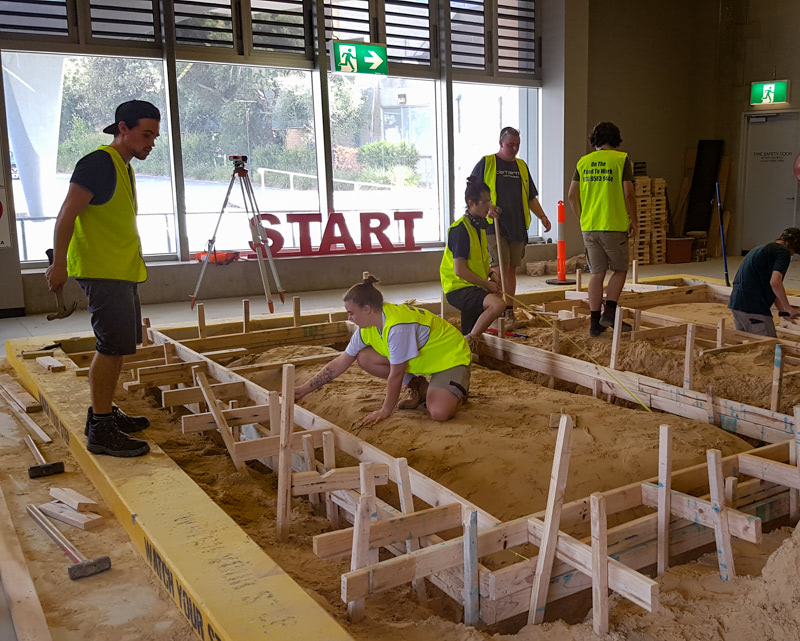How Australia is preparing its post-Covid economy by investing in apprentices

In designing the #FutureofApprenticeships, @GANAustralia makes suggestions for how we can learn from the mistakes of the past:
An Australian perspective on COVID-19
Australia has put in place a number of measures to help apprentices and trainees continue their training during the COVID-19 pandemic.
The lesson from the last recession is that a full economic recovery will need business to also play a part by investing in skill development.
Australia’s labour market challenges were not all caused by the pandemic
Before COVID-19 there were some critical weaknesses in the Australian labour market:
- Persistent long-term unemployment and widespread underemployment,
- Weak labour market for young people, particularly without tertiary qualifications,
- Persistent skills shortages,
- Declining participation in vocational education and training (VET),
- Declining levels of employer investment in workplace training,
- Poor productivity.
Attempts to address at least some of these issues have been hampered by policy structures and systems over the past 5 years including:
- Lack of integration between education, training and employment policies.
- Lack of commitment by employers to investment in vocational training, combined with weakened VET sector capacity to meet the needs of employers.
- A confusing training environment where VET and higher education providers are not incentivised to achieve successful employment outcomes. This has led to too many graduates not able to find employment in over supplied sectors, and employers in other sectors complaining they cannot find skilled graduates at all.
- Industrial relations framework that facilitates the use of short term or insecure engagements like sub-contracting, labour hire, self-employment and importation of skilled workers.
Some of Australia’s most vulnerable groups have been affected by COVID-19
Vulnerable workers have felt the greatest impact from the COVID-19 recession. Young people 18-24 years old have had the greatest decline in employment. Older workers disadvantaged and culturally diverse communities, women and the long term unemployed are also disproportionately affected by the downturn.
Unemployment is expected to peak at around 10% due to the pandemic, but the picture for youth unemployment will be much worse. We expect it will be closer to 20% in some regions and metropolitan pockets.
Our experience over the past 35 years tells us youth and disadvantaged jobseekers take longer to return to work after an economic downturn.
Support programs are helping Australians weather the storm
The Australian government has implemented a number of programs to support businesses and individuals over the past 6 months, since many businesses were forced to shut down in March. A new payment dubbed JobKeeper was introduced to keep employees connected to struggling businesses. Under this scheme, businesses which experienced a revenue reduction of 30% or more received a AU$1500 a fortnight contribution towards the wages of each eligible employee.
The JobSeeker program replaced the unemployment benefit for those temporarily out of work and represented and increase on the previous program, known as Newstart. Initially, the JobSeeker payment of AU$1100 a month did not require the recipient to perform any mutual obligation activities.
The JobTrainer fund finances additional training places as well as expanding and extending an existing apprentices and trainees wage subsidy.
JobKeeper, JobSeeker and JobTrainer have provided employers and individuals with temporary support when it was needed most, but the real test is now how we stimulate the wider economy to re-employ and build back stronger.
These programs have cost the Australian government over $100 billion over the past 6 months
Rebuilding the skilled economy after COVID-19 requires a multi-pronged approach
Stimulus projects can be used to create a pipeline of skilled workers
The Australian government is bringing forward major infrastructure projects and need to spend more stimulus funds on activities like social housing, community services, aged care and IT projects to create jobs and strengthen the economy. Each of these projects can and should incorporate vocational training pathways, creating opportunities now and ensuring that Australia builds a pipeline of skilled workers for the jobs that will be created as the economy rebounds.
As well as skilled labour, employers need a supportive, flexible employment model. This is important, because following past downturns, companies often turned away from traditional apprenticeships in preference of employment models that represented less of a commitment in uncertain times. These included labour hire, skilled immigration and sub-contracting. As a consequence, Australia’s skills pipeline suffered; we simply were not training up the next generation of skilled workers.
Temporary training programs aren’t enough, business has to become part of the skills development pipeline
Australian governments are proposing short term training to develop “skill sets” that meet the needs of business. These may work as a temporary measure, but fail to address the underlying issue that had developed in Australia over the past decades. If we are going to build a strong skilled economy that can compete globally, business will need to invest in workplace training models like apprenticeships in the understanding that they themselves will benefit when everyone is participating in the skills growth cycle.
Group training organisations were created to support businesses in employing apprentices
The existing Australian apprenticeship intermediary model (group training organisations – GTOs) was established in the 1980s during an economic and skills recession. It was designed to support small businesses to employ youth through apprenticeships and support industry to meet growing skill shortages.
Strengthening this national GTO network to coordinate and support employers (both large and small) will create an environment in which employers can confidently employ apprentices. The GTO offers the employer business a flexible work and employment model with administrative and HR support. They also provide mentoring and a safety net for young people, to ensure they are supported during the full four years of their apprenticeship.

Government procurement policies can develop skills at a local level
Governments can incorporate a requirement to run an apprenticeship and traineeship employment program aimed specifically at youth in procurement contracts for all levels of government. These should also be included in the requirements for government funded projects, including sub-contracted services. Policies like the Victorian Governments Local Jobs First Major Project Skills Guarantee that requires 10% of the workforce labour hours on major projects over $20million to be apprentices, trainees, cadets and/or interns provides valuable paid on the job experience for youth and builds skills in the regions and local communities.
Supporting employers to design local, regional and industry specific workforce development plans
If we are to address skills shortages and youth unemployment, we will need to help young people to take up opportunities in professions experiencing or expecting skills shortages. We will need to make a collective effort to support employers and training organisations to design employment pathway programs that meet the local workforce needs of today and into the future.
A business, industry and regional focused workforce development program that identifies current and future skills (jobs) demand can assist businesses with a road map out of COVID-19 and assist job seekers in identifying where and when jobs will be available.
It would also help the VET sector provide targeted training programs to meet business needs.
In-school programs to encourage VET participation and improve apprenticeship completion rates
Multi-industry pre-apprenticeship (MIPs) programs have been shown to improve apprenticeship uptake and outcomes. MIPs provide work experience with employers looking to take on new skilled workers to school-aged young people. There are a number of advantages to these programs, including:
- Designing a multi-industry pre apprenticeship program at a local level that takes into consideration local employers that have work experience and job opportunities.
- A multi-industry program allows for youth to try a range of trades and work options so they can make an informed choice about their choice of career. This has been shown to lead to better completion rates.
- Multi-industry pre-apprenticeships support small regional areas and training providers be able to deliver a sustainable cohort of students fulfilling local skills and economic needs and keeping local communities strong.
- With multiple work experience trials, employers and youth can find a “best fit” prior to commencing an apprenticeship.
- MIP programs increase the number of people within a local region with more broadly based occupational capabilities.
- The MIP model creates a sustainable, flexible employment and training model to suit the local needs.
- When MIPs become a local institution, it increases the number of employers actively contributing to workforce development for their business, the local region and specific industries.











Responses